- HOT Selling Statues
- Western Marble Statues
- Customized Marble Statues
- Angel Marble Statues
- Four Season Marble Statues
- Bust Marble Statues
- Lion Marble Statues
- Horse Marble Statues
- Contact Us
- Chat Online
- Send Inquiry
- News
- Life Size Garden Natural Marble Four Season Statues 19-12-28
- Mixed Color Marble Figure Garden Four Season Statues 19-12-28
- Hand Carved Four Season Lady Garden Greek Marble Statue Prices 19-12-28
- antique polishing marble four seasons statue angels 19-12-28
- Shijiazhuang terifike sculpture Egyptian beige four seasons marble statues with bases 19-12-28
- Life Size Garden Natural Marble Four Season Statues 19-08-15
- Mixed Color Marble Figure Garden Four Season Statues 19-08-15
- Hand Carved Four Season Lady Garden Greek Marble Statue Prices 19-08-15
- antique polishing marble four seasons statue angels 19-08-15
- Shijiazhuang terifike sculpture Egyptian beige four seasons marble statues with bases 19-08-15
The Most Famous Sculpture in the World
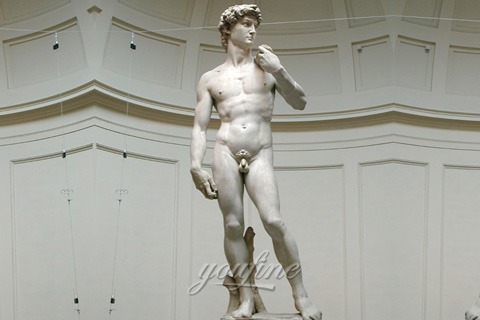
1.
David by Michelangelo
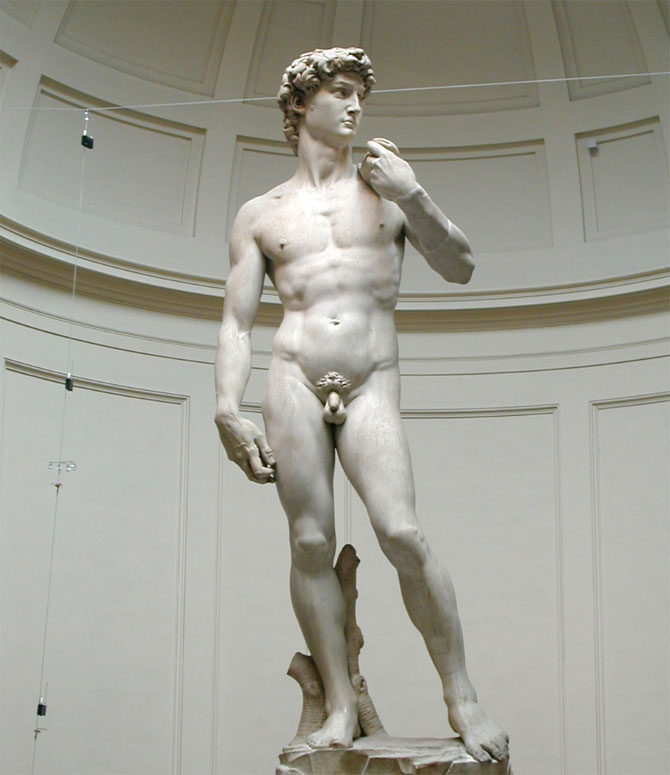
David is a masterpiece of Renaissance sculpture created between 1501 and 1504 by Michelangelo.
It is a 5.17-metre (17.0 ft)marble statue of a standing male nude. The statue represents the Biblical hero David, a favoured subject in the art of Florence. Originally commissioned as one of a series of statues of prophets to be positioned along the roofline of the east end of Florence Cathedral, the statue was placed instead in a public square, outside the Palazzo Vecchio, the seat of civic government in Florence, in the Piazza della Signoria where it was unveiled on September 8, 1504.
Because of the nature of the hero it represented, the statue soon came to symbolize the defense of civil liberties embodied in the Republic of Florence, an independent city-state threatened on all sides by more powerful rival states and by the hegemony of the Medici family. The eyes of David, with a warning glare, were turned towards Rome.The statue was moved to the Galleria dell’Accademia, Florence, in 1873, and later replaced at the original location by a replica.
2.
Venus de Milo by Praxiteles
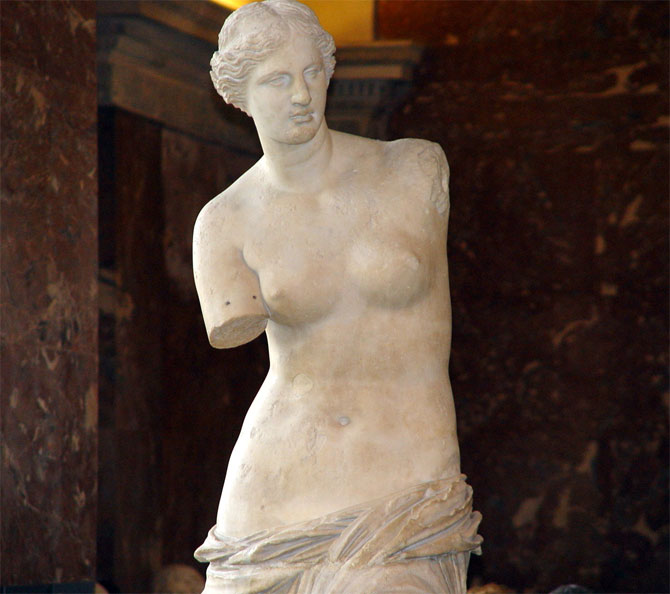
Aphrodite of Milos , better known as the Venus de Milo, is an ancient Greek statue and one of the most famous works of ancient Greek sculpture. Initially it was attributed to the sculptor Praxiteles, however from an inscription that was on its plinth, the statue is thought to be the work of Alexandros of Antioch. Created sometime between 130 and 100 BC, the statue is believed to depict Aphrodite, the Greek goddess of love and beauty (Venus to the Romans). It is a marble sculpture, slightly larger than life size at 203 cm (6 ft 8 in) high. Part of an arm and the original plinth were lost following its discovery. It is currently on permanent display at the Louvre Museum in Paris. The statue is named after the Greek island of Milos, where it was discovered.
3.
The Thinker by Auguste Rodin
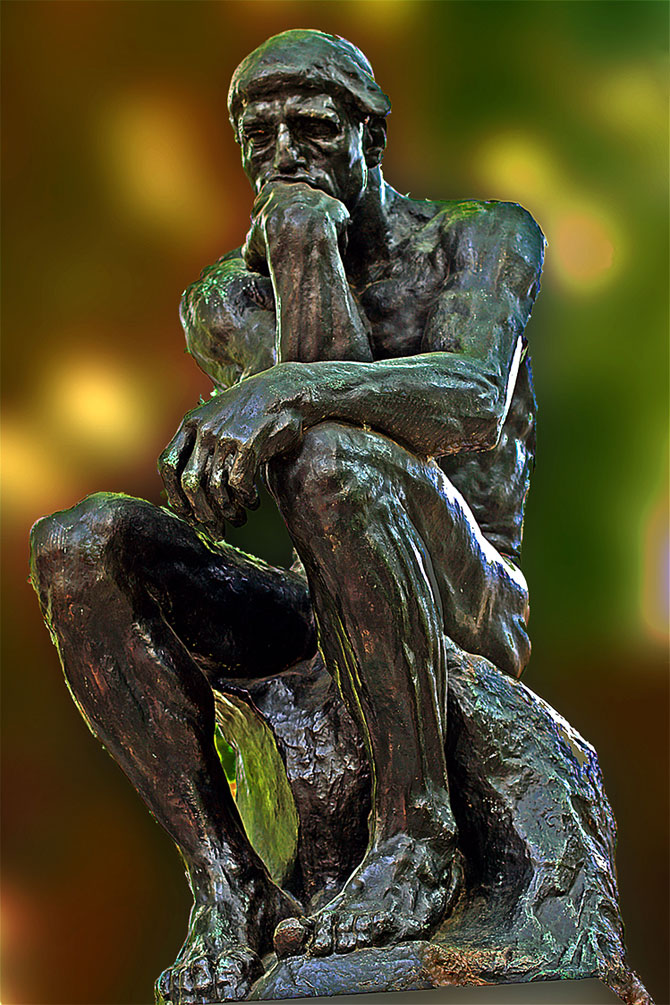
The Thinker (French: Le Penseur) is a bronze sculpture by Auguste Rodin, usually placed on a stone pedestal. The work shows a nude male figure of over life-size sitting on a rock with his chin resting on one hand as though deep in thought and is often used as an image to represent philosophy. There are about 28 full size castings, in which the figure is about 186 centimetres (73 in) high, though not all were made during Rodin’s lifetime and under his supervision; as well as various other versions, several in plaster, studies, and posthumous castings, in a range of sizes. Rodin first conceived the figure as part of his work The Gates of Hell commissioned in 1880, but the first of the familiar monumental bronze castings did not appear until 1904.
4.
The Discobolus
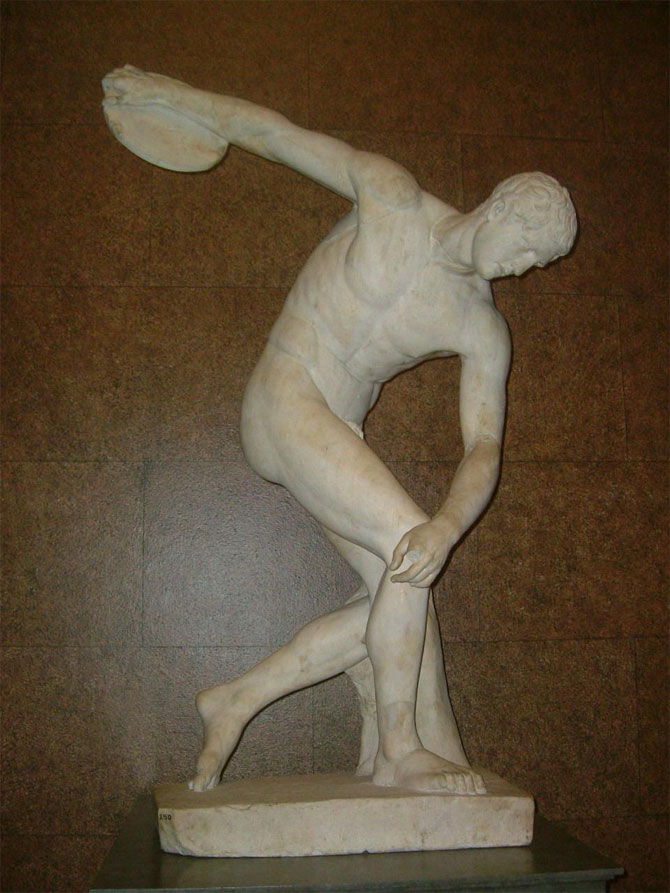
The Discobolus of Myron is a Greek sculpture that was completed toward the end of the Severe period, circa 460–450 BC. The original Greek bronze is lost but the work is known through numerous Roman copies, both full-scale ones in marble, which was cheaper than bronze,such as the first to be recovered, the Palombara Discobolus, and smaller scaled versions in bronze.
A discus thrower is depicted about to release his throw: “by sheer intelligence”, Kenneth Clark observed in The Nude, “Myron has created the enduring pattern of athletic energy. He has taken a moment of action so transitory that students of athletics still debate if it is feasible, and he has given it the completeness of a cameo.”The moment thus captured in the statue is an example of rhythmos, harmony and balance. Myron is often credited with being the first sculptor to master this style. Naturally, as always in Greek athletics, the Discobolus is completely nude. His pose is said to be unnatural to a human, and today considered a rather inefficient way to throw the discus. Also there is very little emotion shown in the discus thrower’s face, and “to a modern eye, it may seem that Myron’s desire for perfection has made him suppress too rigorously the sense of strain in the individual muscles,”Clark observes. The other trademark of Myron embodied in this sculpture is how well the body is proportioned, the symmetria.
The potential energy expressed in this sculpture’s tightly wound pose, expressing the moment of stasis just before the release, is an example of the advancement of Classical sculpture from Archaic. The torso shows no muscular strain, however, even though the limbs are outflung.
5.
The Pieta by Michelangelo
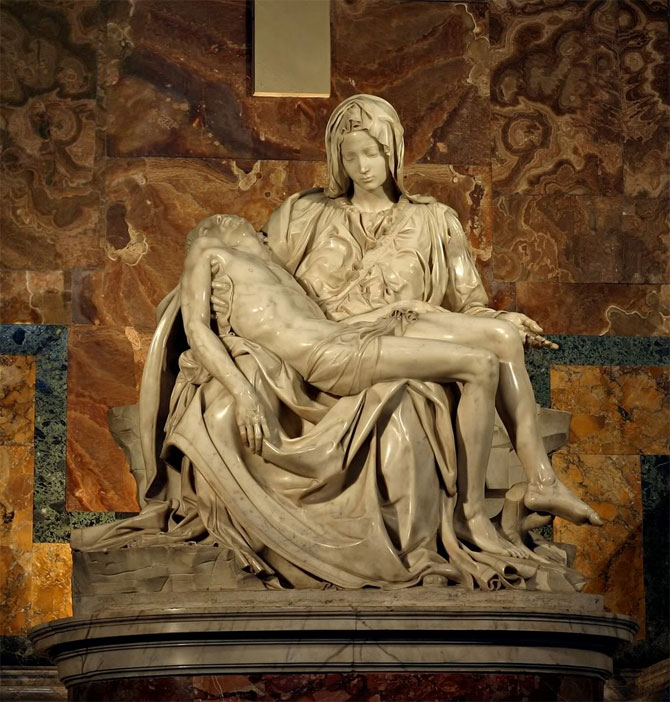
The Pietà (Italian pronunciation: [pjeˈta]) is a subject in Christian art depicting the Virgin Mary cradling the dead body of Jesus, most often found in sculpture. As such, it is a particular form of the Lamentation of Christ, a scene from the Passion of Christ found in cycles of the Life of Christ. When Christ and the Virgin are surrounded by other figures from the New Testament, the subject is strictly called a Lamentation in English, although Pietà is often used for this as well, and is the normal term in Italian.
6.
The Kiss by Auguste Rodin
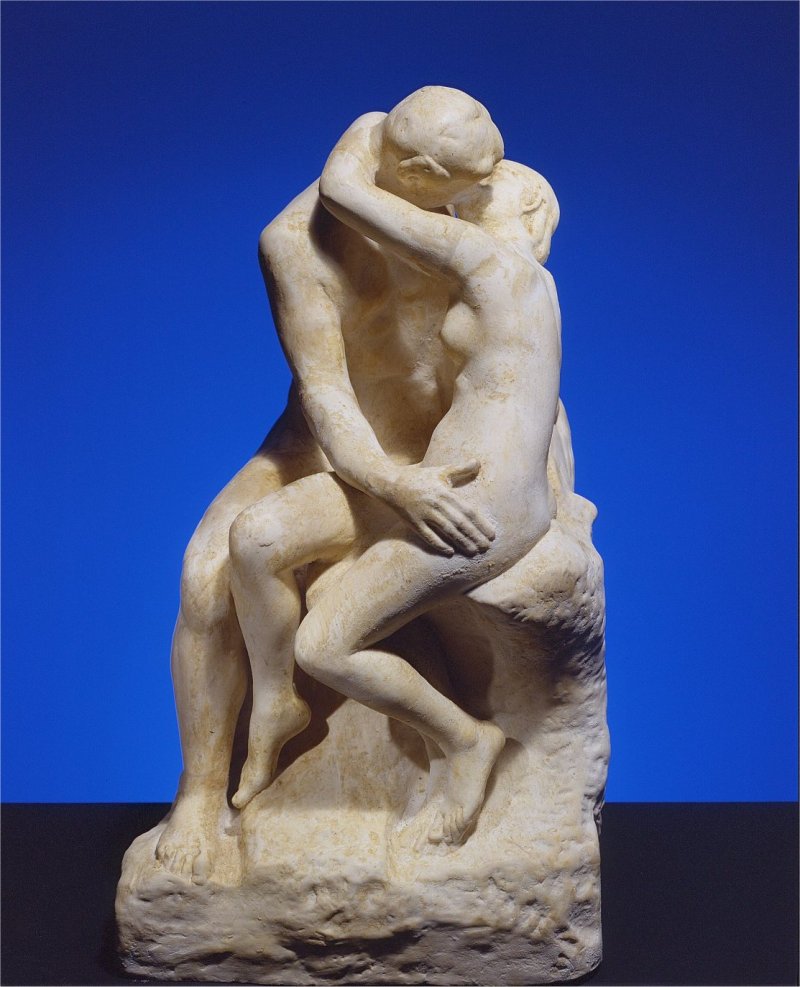
The Kiss (French: Le Baiser) is an 1882 marble sculpture by the French sculptor Auguste Rodin. The embracing couple depicted in the sculpture appeared originally as part of a group of reliefs decorating Rodin’s monumental bronze portal The Gates of Hell, commissioned for a planned museum of art in Paris. The couple were later removed from the Gates and replaced with another pair of lovers located on the smaller right-hand column.
7.
Hermes and the Infant Dionysus by Praxiteles
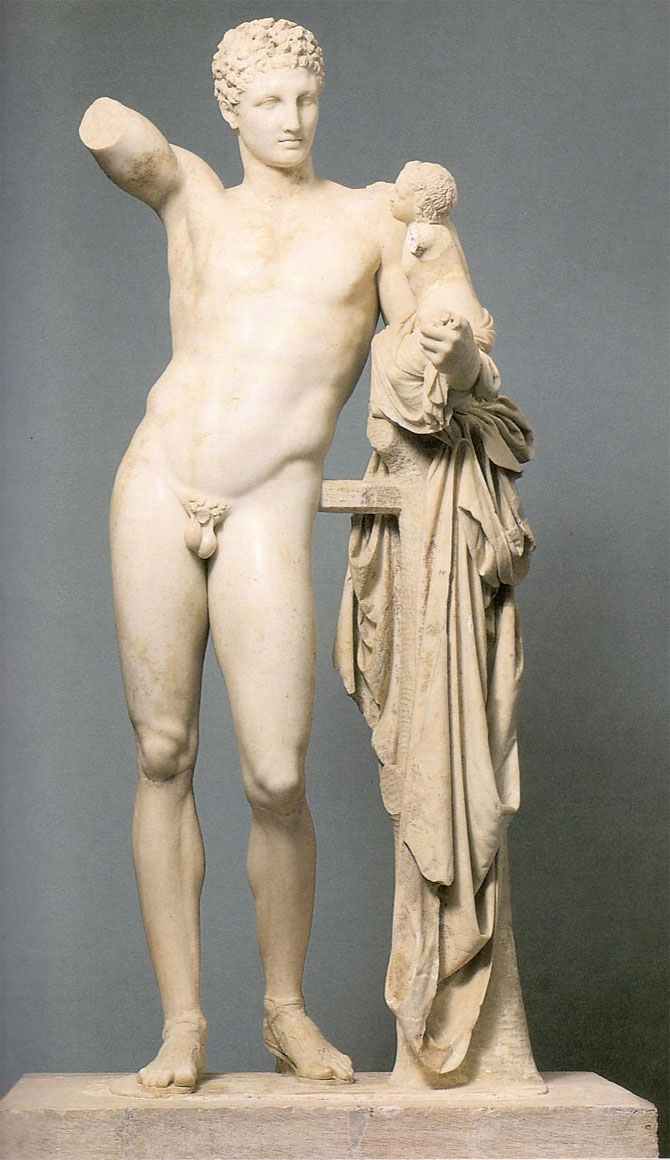
Praxiteles f Athens, the son of Cephisodotus the Elder, was the most renowned of the Attic sculptors of the 4th century BC. He was the first to sculpt the nude female form in a life-size statue. While no indubitably attributable sculpture by Praxiteles is extant, numerous copies of his works have survived; several authors, including Pliny the Elder, wrote of his works; and coins engraved with silhouettes of his various famous statuary types from the period still exist.
A supposed relationship between Praxiteles and his beautiful model, the Thespian courtesan Phryne, has inspired speculation and interpretation in works of art ranging from painting (Gérôme) to comic opera (Saint-Saëns) to shadow play (Donnay).
Some writers have maintained that there were two sculptors of the name Praxiteles. One was a contemporary of Pheidias, and the other his more celebrated grandson. Though the repetition of the same name in every other generation is common in Greece, there is no certain evidence for either position.
8.
The Statue of Liberty by Frédéric Auguste Bartholdi
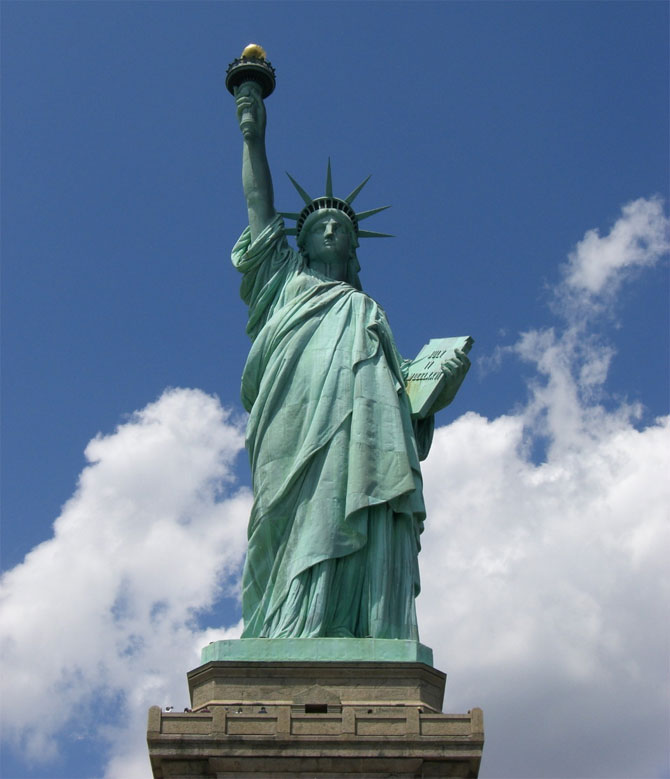
The Statue of Liberty (Liberty Enlightening the World; French: La Liberté éclairant le monde) is a colossal neoclassical sculpture on Liberty Island in New York Harbor in New York City, in the United States. The copper statue, a gift from the people of France to the people of the United States, was designed by French sculptor Frédéric Auguste Bartholdi and built by Gustave Eiffel. The statue was dedicated on October 28, 1886.
The Statue of Liberty is a figure of a robed woman representing Libertas, a Roman goddess. She holds a torch above her head with her right hand, and in her left hand carries a tabula ansata inscribed in Roman numerals with “JULY IV MDCCLXXVI” (July 4, 1776), the date of the U.S. Declaration of Independence. A broken chain lies at her feet. The statue became an icon of freedom and of the United States, and was a welcoming sight to immigrants arriving from abroad.
Bartholdi was inspired by a French law professor and politician, Édouard René de Laboulaye, who is said to have commented in 1865 that any monument raised to U.S. independence would properly be a joint project of the French and American peoples. Because of the post-war instability in France, work on the statue did not commence until the early 1870s. In 1875, Laboulaye proposed that the French finance the statue and the U.S. provide the site and build the pedestal. Bartholdi completed the head and the torch-bearing arm before the statue was fully designed, and these pieces were exhibited for publicity at international expositions.
9.
Moses by Michelangelo
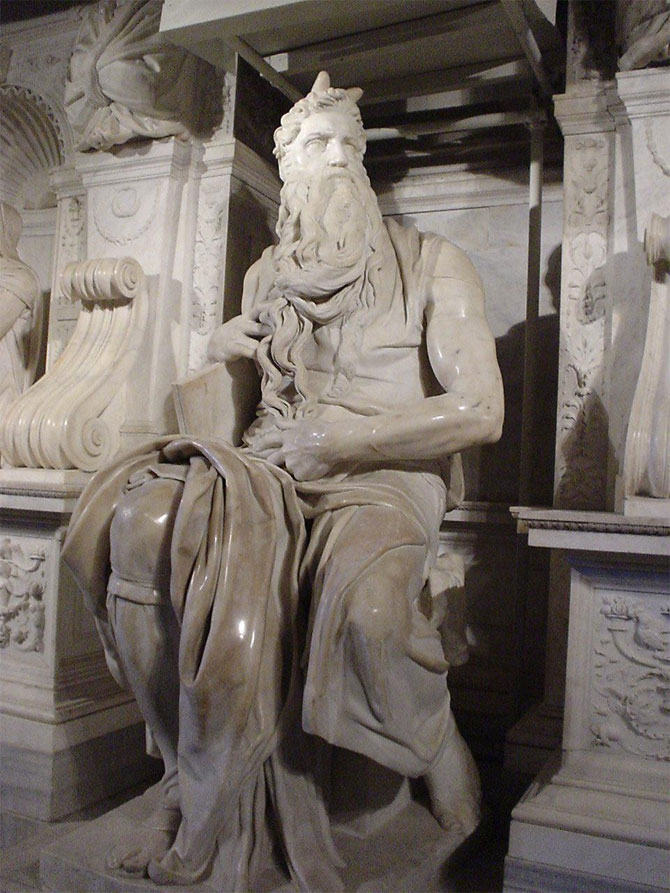
TheMoses (Italian: Mosè [moˈzɛ]; c. 1513–1515) is a sculpture by the Italian High Renaissance artist Michelangelo Buonarroti, housed in the church of San Pietro in Vincoli in Rome. Commissioned in 1505 by Pope Julius II for his tomb, it depicts the biblical figure Moses with horns on his head, based on a description in chapter 34 of Exodus in the Vulgate, the Latin translation of the Bible used at that time.
10
Abraham Lincoln Statue by Daniel Chester
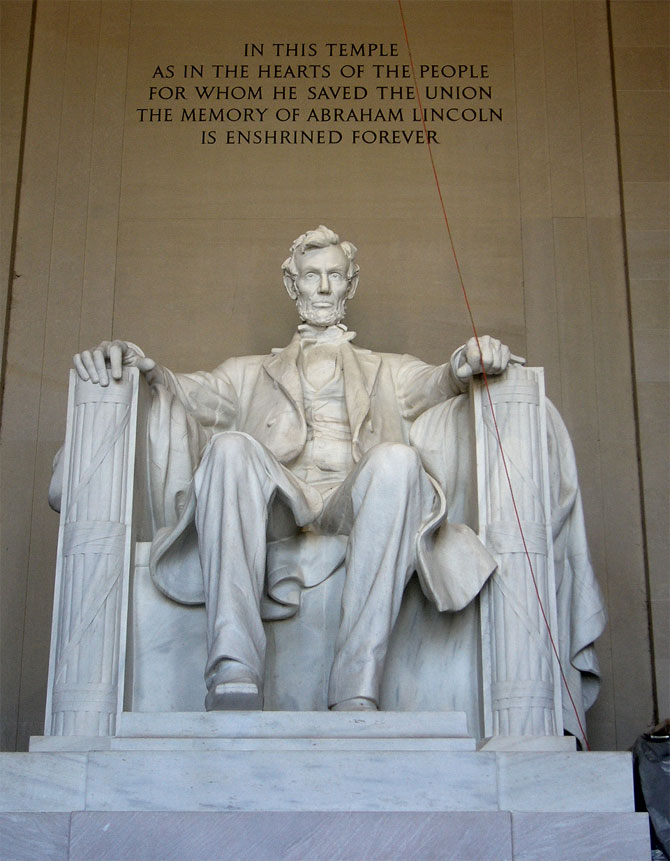
Abraham Lincoln (1920) is a colossal seated figure of U.S. President Abraham Lincoln (1809–1865) sculpted by Daniel Chester French (1850–1931) and carved by the Piccirilli Brothers. It is situated in the Lincoln Memorial (constructed 1914–22), on the National Mall, Washington, D.C., USA, and was unveiled in 1922. Stylistically, the work follows in the Beaux Arts and American Renaissance traditions.
11.
Winged Victory of Samothrace
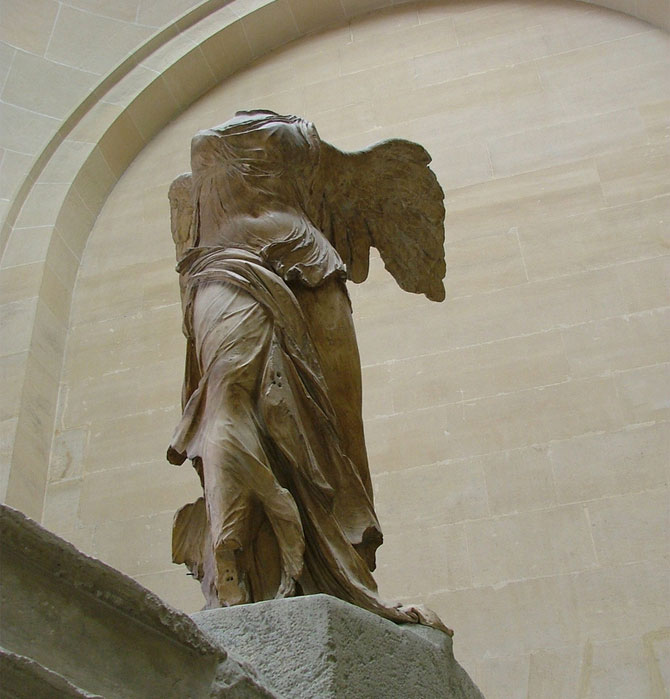
The Winged Victory of Samothrace, also called the Nike of Samothrace,is a marble Hellenistic sculpture of Nike (the Greek goddess of victory), that was created about the 2nd century BC. Since 1884, it has been prominently displayed at the Louvre and is one of the most celebrated sculptures in the world. H.W. Janson described it as “the greatest masterpiece of Hellenistic sculpture”,and it is one of a small number of major Hellenistic statues surviving in the original, rather than Roman copies.
12.
Apollo Belvedere
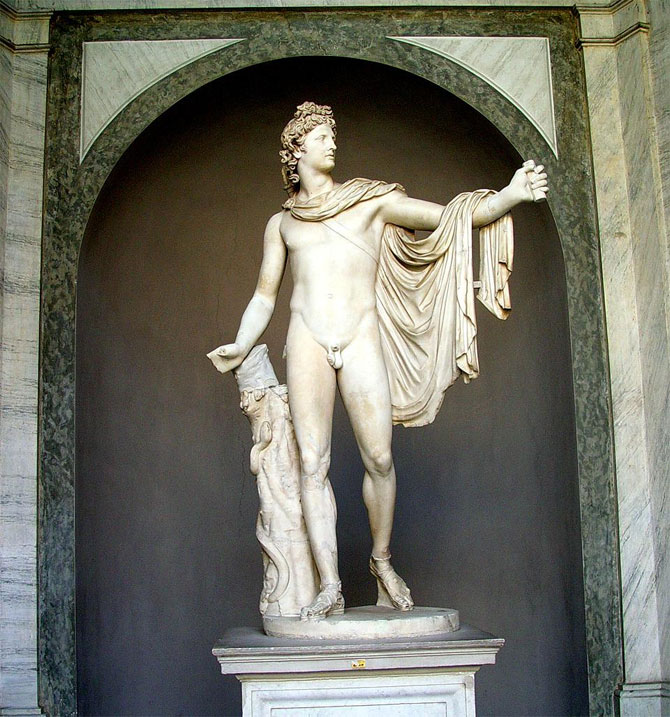
The Apollo Belvedere or Apollo of the Belvedere—also called the Pythian Apollo—is a celebrated marble sculpture from Classical Antiquity.
It was rediscovered in central Italy in the late 15th century, during the Renaissance. From the mid-18th century it was considered the greatest ancient sculpture by ardent neoclassicists, and for centuries epitomized ideals of aesthetic perfection for Europeans and westernized parts of the world. It is now found in the Cortile delle Statue of the Pio-Clementine Museum of the Vatican Museums complex.
13.
Apollo and Daphne by Bernini
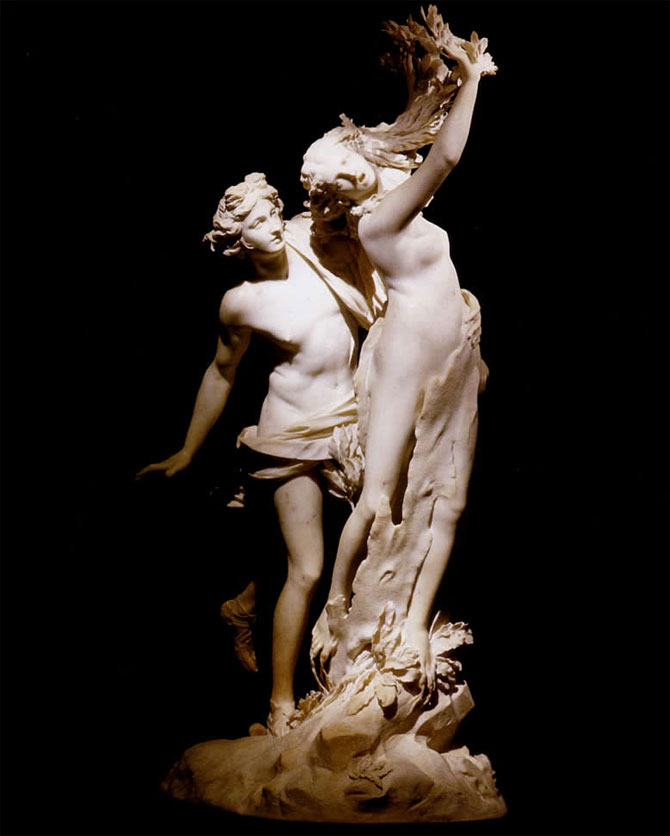
Apollo and Daphne is a life-sized Baroque marble sculpture by Italian artist Gian Lorenzo Bernini, executed between 1622 and 1625. Housed in the Galleria Borghese in Rome, the work depicts the climax of the story of Daphne and Phoebus in Ovid’s Metamorphoses.
The sculpture was the last of a number of artworks commissioned by Cardinal Scipione Borghese, early on in Bernini’s career. Apollo and Daphne was commissioned after Borghese had given an earlier work of his patronage, Bernini’s Pluto and Persephone, to Cardinal Ludovico Ludovisi.
Much of the early work was done in 1622–1623, but a pause, quite possibly to work on the sculpture of David, interrupted its completion, and Bernini did not finish the work until 1625. Indeed, the sculpture itself was not moved to the Cardinal’s Villa Borghese until September 1625. Bernini did not execute the sculpture by himself; he had significant help from a member of his workshop, Giuliano Finelli, who undertook the sculpture of the details that show Daphne’s conversion from human to tree, such as the bark and branches, as well as her windswept hair. Some historians, however, discount the importance of Finelli’s contribution.
While the sculpture may be appreciated from multiple angles, Bernini planned for it to be viewed side on, allowing the observer to see the reactions of Apollo and Daphne simultaneously, thus understanding the narrative of the story in a single instant, without the need to move position.
14.
The Dying Gaul
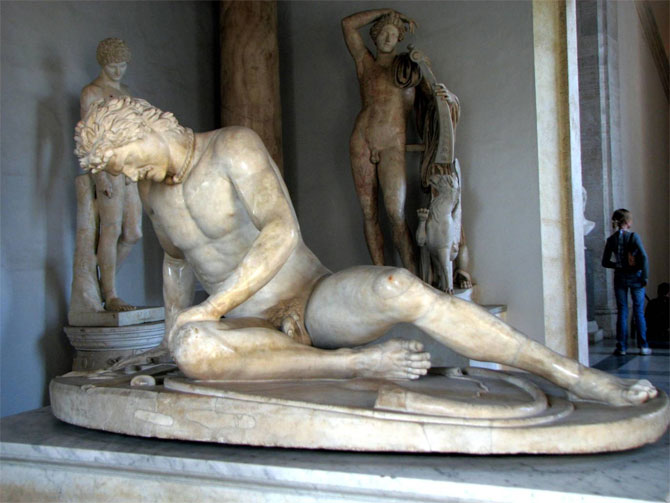
The Dying Gaul, also called The Dying Galatian(in Italian: Galata Morente) or The Dying Gladiator, is an Ancient Roman marble copy of a lost Hellenistic sculpture, thought to have been originally executed in bronze.The original may have been commissioned some time between 230 and 220 BC by Attalus I of Pergamon to celebrate his victory over the Galatians, the Celtic or Gaulish people of parts of Anatolia (modern Turkey). The identity of the sculptor of the original is unknown, but it has been suggested that Epigonus, a court sculptor of the Attalid dynasty of Pergamon, may have been the creator.
The copy was most commonly known as The Dying Gladiator until the 20th century on the assumption that it depicted a wounded gladiator in a Roman amphitheatre. Scholars had identified it as a Gaul or Galatian by the mid-19th century, but it took many decades for the new title to achieve popular acceptance.
15.
Christ the Redeemer by Paul Landowski
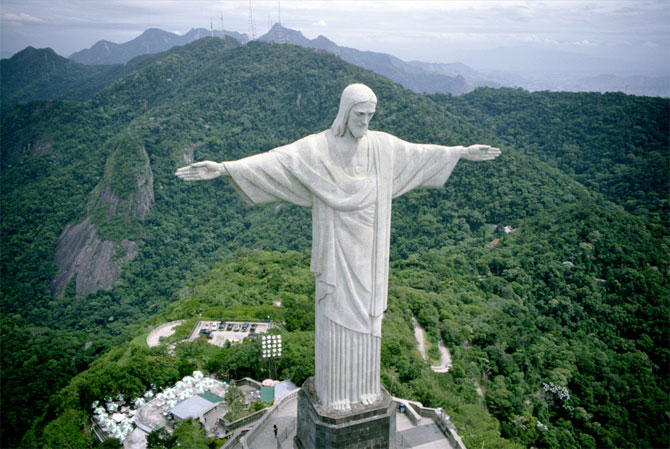
Christ the Redeemer is an Art Deco statue of Jesus Christ in Rio de Janeiro, Brazil, created by French sculptor Paul Landowski and built by the Brazilian engineer Heitor da Silva Costa, in collaboration with the French engineer Albert Caquot. Romanian sculptor Gheorghe Leonida fashioned the face. Constructed between 1922 and 1931, the statue is 30 metres (98 ft) tall, excluding its 8-metre (26 ft) pedestal. The arms stretch 28 metres (92 ft) wide.
The statue weighs 635 metric tons (625 long, 700 short tons), and is located at the peak of the 700-metre (2,300 ft) Corcovado mountain in the Tijuca Forest National Park overlooking the city of Rio de Janeiro. A symbol of Christianity across the world, the statue has also become a cultural icon of both Rio de Janeiro and Brazil, and is listed as one of the New Seven Wonders of the World. It is made of reinforced concrete and soapstone.
Last Article:david statue for garden decor
Next Article:Sculpture& Craving David bible in Italy

